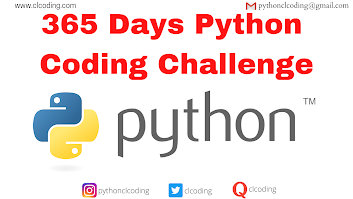The intersection of machine learning and operations—commonly referred to as MLOps—has become critical for deploying, monitoring, and scaling AI models effectively. Platforms like Euron One provide specialized courses, such as the "MLOps Production-Ready Deep Learning Project," to equip professionals with the skills required to navigate this complex domain. This blog dives into the significance of MLOps, the insights provided by this course, and how it can transform your career.
Mastering MLOps with Production-Ready Deep Learning Projects: A Comprehensive Guide
The intersection of machine learning and operations—commonly referred to as MLOps—has become critical for deploying, monitoring, and scaling AI models effectively. Platforms like Euron One provide specialized courses, such as the "MLOps Production-Ready Deep Learning Project," to equip professionals with the skills required to navigate this complex domain. This blog dives into the significance of MLOps, the insights provided by this course, and how it can transform your career.
Why MLOps Matters in Modern AI
Machine learning models are no longer confined to research; they are now pivotal to businesses across industries. However, deploying ML models into production is fraught with challenges:
Model Deployment: Transitioning from training to production-ready pipelines.
Monitoring: Tracking model performance in real-world scenarios.
Scalability: Ensuring models can handle increasing demands.
Reproducibility: Maintaining consistency across multiple iterations of development and deployment.
MLOps bridges the gap between data science and operations, ensuring the lifecycle of machine learning models is seamless, efficient, and scalable.
Overview of the Course
The "MLOps Production-Ready Deep Learning Project" offered by Euron One is tailored for professionals looking to deepen their understanding of MLOps and build expertise in deploying deep learning models in real-world settings. Below is a breakdown of what the course entails:
1. Curriculum Highlights
End-to-End ML Pipeline Design: Learn how to structure the entire ML pipeline, from data ingestion to model deployment.
Data Management: Best practices for preprocessing, feature engineering, and version control for datasets.
Model Training & Validation: Advanced training techniques, hyperparameter optimization, and robust validation strategies.
Containerization: Use of Docker to package models for consistent deployment across environments.
CI/CD for Machine Learning: Integrate Continuous Integration/Continuous Deployment pipelines tailored for ML workflows.
Monitoring and Maintenance: Implement model monitoring tools to track drift, latency, and accuracy.
Scalable Infrastructure: Leverage cloud platforms like AWS, GCP, or Azure for training and deployment.
2. Tools and Frameworks Covered
Docker and Kubernetes: For containerization and orchestration.
TensorFlow and PyTorch: Frameworks for building and training deep learning models.
MLFlow and DVC: For experiment tracking and version control.
FastAPI and Flask: For creating APIs for ML model inference.
Prometheus and Grafana: For monitoring metrics and visualizing data.
3. Hands-On Projects
The course stands out by incorporating practical, production-ready projects. These projects include:
Deploying a Computer Vision Model: Train and deploy a deep learning model for image classification using Kubernetes.
Building a Recommendation System: Develop and serve a real-time recommendation model with APIs.
Sentiment Analysis on Streaming Data: Analyze real-time data using NLP models integrated into scalable pipelines.
4. Who Should Take This Course?
This course is ideal for:
Data Scientists: Transitioning to roles that involve deploying ML models.
Software Engineers: Interested in integrating AI into production systems.
AI/ML Enthusiasts: Looking to deepen their understanding of MLOps workflows.
What you will learn
- Understand the MLOps lifecycle for deep learning projects.
- Implement CI/CD pipelines for seamless model deployment.
- Utilize Docker and Kubernetes for containerized deployment.
- Manage model versioning and automated workflows.
- Deploy scalable and reliable machine learning models in production.
- Monitor deployed models with logging and alerting systems.
- Optimize models for performance in real-world environments.
- Gain hands-on experience with cloud-based MLOps tools and platforms.







.png)


.png)



.png)




.png)
.png)

.png)

.png)



























%20in%20Finance).jpg)
















